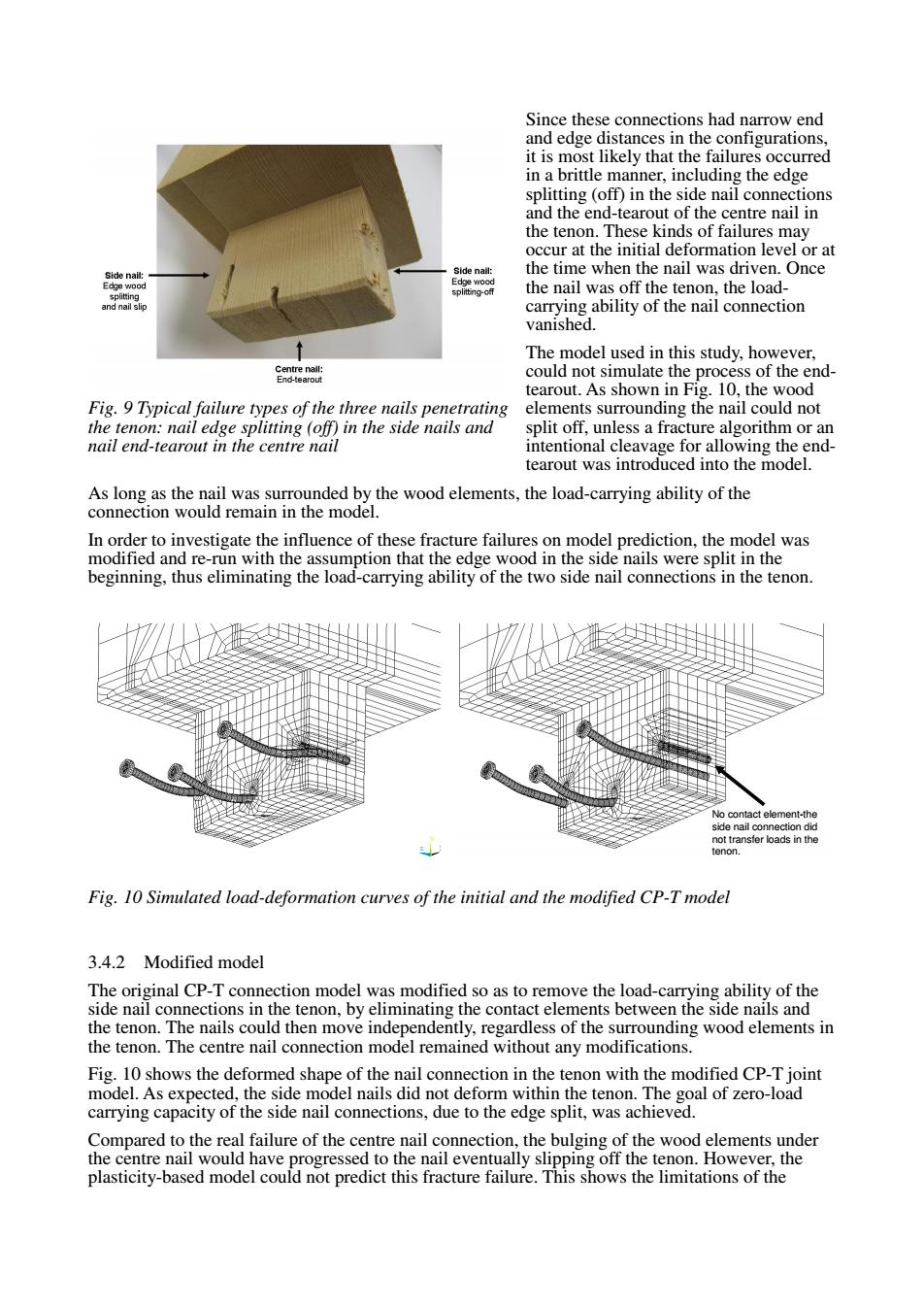正在加载图片...

in a brittle tre naon the time when connection ele ements surrounding the nail c ld no side nails an th the end- tearout was introduced into the model. h wood elements,the load-carrying by of the norteoiayetigaetenemcfheefaceacmeocdepPmlctietp model was nthusnating the load carying blityof thoctothe ton. Fig.10 Simulated load-deformation curves of the initial and the modified CP-Tmodel 3.4.2 Modified model The original cp.T connection model was modified so as to remove the load-carrving ability of the side nail connec n The nai Compared to the real failure of the centre nail conc the bulging of the wood elements uderFig. 9 Typical failure types of the three nails penetrating the tenon: nail edge splitting (off) in the side nails and nail end-tearout in the centre nail Since these connections had narrow end and edge distances in the configurations, it is most likely that the failures occurred in a brittle manner, including the edge splitting (off) in the side nail connections and the end-tearout of the centre nail in the tenon. These kinds of failures may occur at the initial deformation level or at the time when the nail was driven. Once the nail was off the tenon, the loadcarrying ability of the nail connection vanished. The model used in this study, however, could not simulate the process of the endtearout. As shown in Fig. 10, the wood elements surrounding the nail could not split off, unless a fracture algorithm or an intentional cleavage for allowing the endtearout was introduced into the model. As long as the nail was surrounded by the wood elements, the load-carrying ability of the connection would remain in the model. In order to investigate the influence of these fracture failures on model prediction, the model was modified and re-run with the assumption that the edge wood in the side nails were split in the beginning, thus eliminating the load-carrying ability of the two side nail connections in the tenon. No contact element-the side nail connection did not transfer loads in the tenon. Fig. 10 Simulated load-deformation curves of the initial and the modified CP-T model 3.4.2 Modified model The original CP-T connection model was modified so as to remove the load-carrying ability of the side nail connections in the tenon, by eliminating the contact elements between the side nails and the tenon. The nails could then move independently, regardless of the surrounding wood elements in the tenon. The centre nail connection model remained without any modifications. Fig. 10 shows the deformed shape of the nail connection in the tenon with the modified CP-T joint model. As expected, the side model nails did not deform within the tenon. The goal of zero-load carrying capacity of the side nail connections, due to the edge split, was achieved. Compared to the real failure of the centre nail connection, the bulging of the wood elements under the centre nail would have progressed to the nail eventually slipping off the tenon. However, the plasticity-based model could not predict this fracture failure. This shows the limitations of the